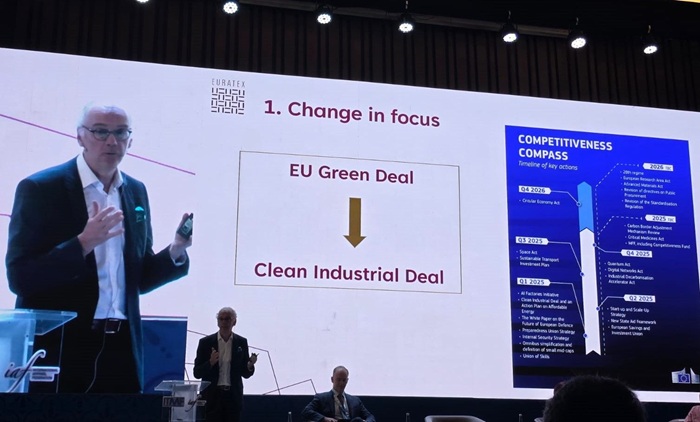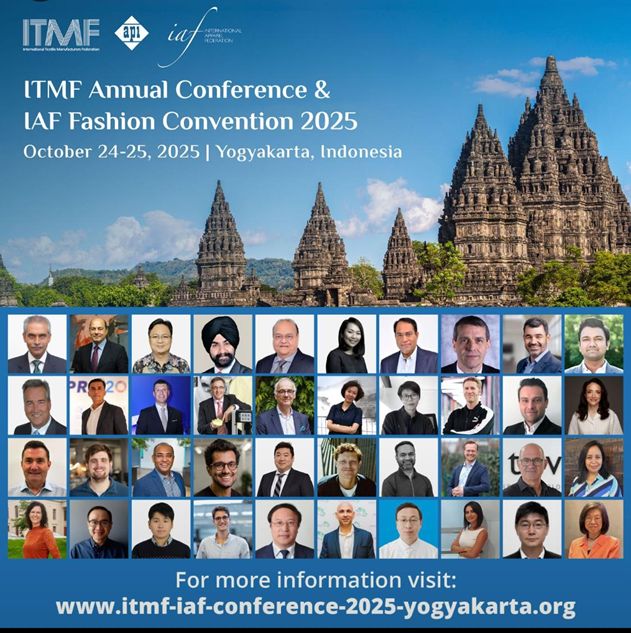
In an era of geopolitical volatility and supply chain disruptions, apparel giants are navigating a complex landscape, meticulously adjusting their sourcing strategies. A recent analysis by Sheng Lu, Professor & Director of Graduate Studies in the Department of Fashion and Apparel Studies at the University of Delaware, provides a compelling insight into VF Corporation's evolving sourcing base between 2023 and 2024.
VF Corporation, a powerhouse in the apparel industry with brands like The North Face, Timberland, and Icebreaker, presents a fascinating case study. With global revenues projected to exceed $10 billion in 2024 and a geographically diverse revenue stream (52 per cent Americas, 33 per cent Europe, 15 per cent Asia-Pacific), VF's sourcing decisions carry significant weight.
Consolidation and diversification
Lu's research reveals a key trend: VF is simultaneously consolidating its supplier base while maintaining geographic diversification. Between Q1 2023 and Q3 2024, the number of apparel factories VF contracted with decreased from 463 to 426, and textile mills from 665 to 546. This consolidation aligns with broader industry trends, as companies seek to mitigate sourcing risks and enhance operational efficiency.
However, VF continues to source from a wide range of countries, maintaining a presence in 36 nations across Asia, the Americas, Europe, and Africa for apparel production, and roughly 30 for textile raw materials. This dual approach signifies a balancing act between streamlining operations and ensuring supply chain resilience.
Table: VF Corporation's Garment Factory Shifts (2023-2024)
|
Country |
Q1 2023 factories |
Q3 2024 factories |
Change |
|
China |
107 |
102 |
-5 |
|
Vietnam |
53 |
89 |
+36 |
|
Bangladesh |
63 |
51 |
-12 |
|
India |
47 |
30 |
-17 |
|
Cambodia |
14 |
21 |
+7 |
|
Indonesia |
19 |
23 |
+4 |
|
Mexico |
28 |
12 |
-16 |
|
USA |
20 |
10 |
-10 |
Asia's dominance and shifting dynamics
As expected, Asia remains VF's primary apparel sourcing base, accounting for approximately 55.3 per cent of its garment factories in Q3 2024, up from 48.8 per cent in Q1 2023. Within Asia, however, significant shifts are underway.
While China continues to be a major player (23.1 per cent of garment factories), VF has reduced its reliance on the country, along with Bangladesh and India, while significantly increasing sourcing from Vietnam, Cambodia, and Indonesia. This highlights a strategic move to diversify within Asia, mitigating risks associated with over-reliance on a single nation. VF appears to utilize China for smaller, more diverse orders, with a prevalence of small and medium-sized factories (11-500 workers). This suggests flexibility and responsiveness to varied product demands. In contrast, Vietnam sees a rise in VF's presence, primarily in large-scale factories with over 1,000 workers. This indicates a focus on high-volume production and cost-efficiency.
Textile raw materials: Vchina's indispensable role
VF's reliance on Asia for textile raw materials is even more pronounced, with 83.5 per cent of suppliers located in the region. Notably, China accounts for nearly half of VF's textile material suppliers, including yarn, fabric, and trim mills. Despite a reduction in the number of textile mills in China, its overall share remains stable. This reinforces the challenge of diversifying textile sourcing away from China, given the capital-intensive nature of textile production.
Table: VF Corp's textile raw material sourcing Q3 2024
|
Textile raw material type |
% of suppliers in Asia |
% of suppliers in China |
|
Textile Yarn and Fabric Mills |
83.50% |
41.20% |
|
Trim Mills |
83.50% |
50.90% |
This table highlights the concentration of VF's textile raw material sourcing in Asia, with a particular focus on China. It clearly shows the percentage of suppliers for the two main textile raw material types.
Nearshoring and onshoring
Contrary to expectations, VF has decreased its sourcing from the Western Hemisphere, with a reduction in garment factories in Mexico and the US. This suggests that nearshoring and onshoring are not VF's primary strategies in the current economic climate, despite their potential benefits.
Lu's analysis also reveals a correlation between factory size and sourcing strategy. In Asia, large factories in Vietnam, Cambodia, Indonesia, and Pakistan cater to high-volume production, while smaller factories in China handle diverse orders. In the Americas and Africa, large factories in Haiti, Honduras, El Salvador, Kenya, and Jordan serve as potential alternatives to Asian sourcing for specific categories.
Table: VF Corp's garment factory size distribution
|
Country |
% of factories with 11-100 workers |
% of factories with 101-500 workers |
% of factories with >1,000 workers |
|
China |
43.90% |
33.70% |
Less than 10% |
|
Bangladesh |
less than 10% |
less than 10% |
~90% |
|
Vietnam |
less than 10% |
~30% |
52.20% |
|
Cambodia |
less than 10% |
~40% |
50.00% |
|
Indonesia |
less than 10% |
~25% |
63.20% |
|
Pakistan |
0% |
0% |
100% |
VF's evolving sourcing strategy reflects the complex challenges and opportunities facing the apparel industry. The company's focus on consolidation, diversification within Asia, and strategic alignment of factory size with production needs highlights a pragmatic approach to navigating a dynamic global landscape.
Lu's research underscores the importance of data-driven analysis in understanding these shifts. As geopolitical tensions and supply chain disruptions persist, companies like VF will continue to adapt their sourcing strategies, balancing cost-efficiency, risk mitigation, and responsiveness to evolving consumer demands.












